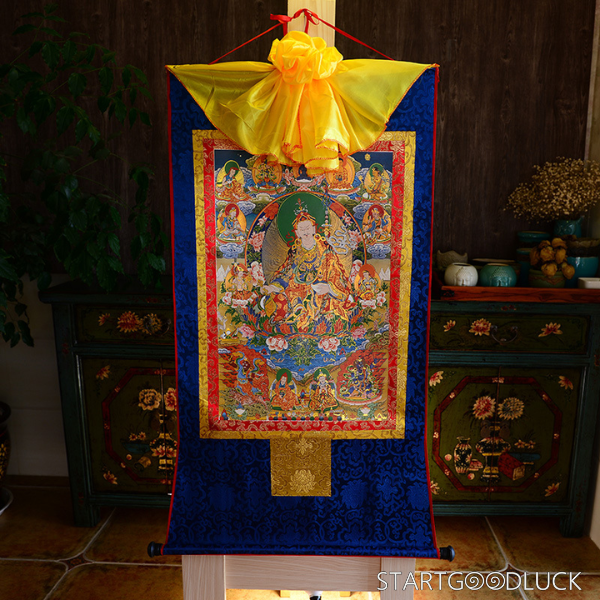This exquisite Thangka painting features Padmasambhava seated in a sacred gesture, crafted with traditional Tibetan embroidery. As a sacred symbol of Dharma spread and spiritual awakening in Tibetan Buddhism, this hand-embroidered Thangka honors the “Second Buddha” who established Buddhism in Tibet—ideal for spiritual home decor and those seeking inspiration from his role as a bridge between Indian and Tibetan spiritual traditions.
Origin & Meaning of Padmasambhava
Padmasambhava (8th century CE) is revered as the founder of Tibetan Buddhism, invited by Tibetan King Trisong Detsen to tame local spirits and establish the first monastery (Samye). Born from a lotus in India’s Oddiyana, he merged Buddhist teachings with Tibetan Bon traditions, turning deities into Dharma protectors. His “Twenty-Five Disciples” (including nuns and laypeople) became the first generation of Tibetan Buddhist masters, proving enlightenment is accessible to all.
Symbolism of the Embroidered Thangka
Lotus throne: Represents his birth from a lotus—purity transcending worldly ties. Puja items: Holds a vajra (spiritual power) and skull cup (transcending death), with a lotus in his aura (enlightenment). Flanking figures: Include his consort Yeshe Tsogyal (who preserved his teachings) and disciples—symbolizing the lineage of wisdom. Crafted with silk threads and gold accents, this Thangka serves as a vivid reminder of the power of spiritual synthesis and the courage to awaken beyond cultural boundaries.



